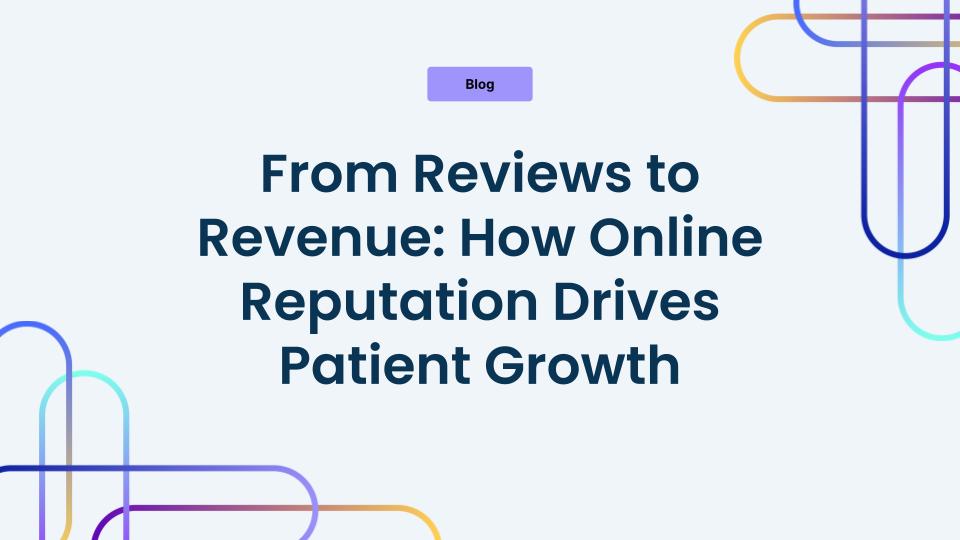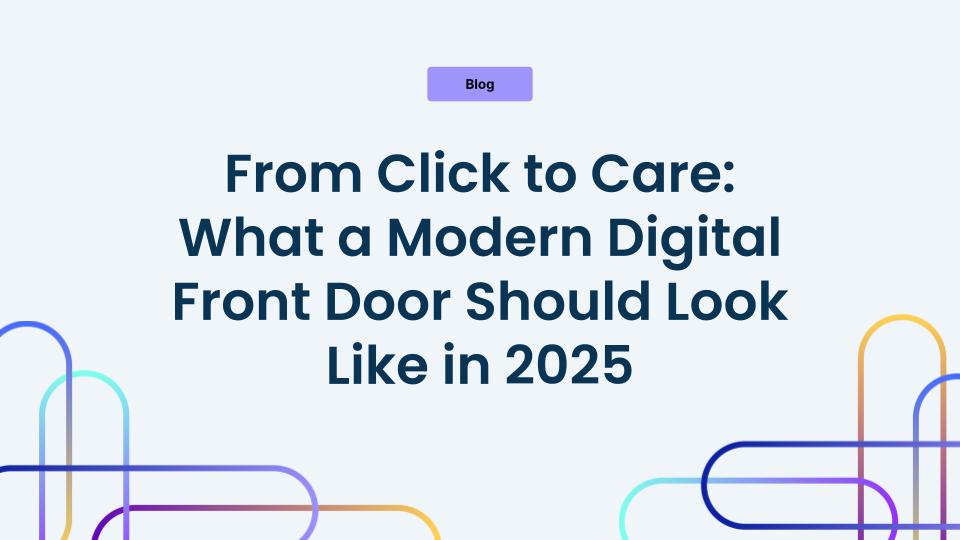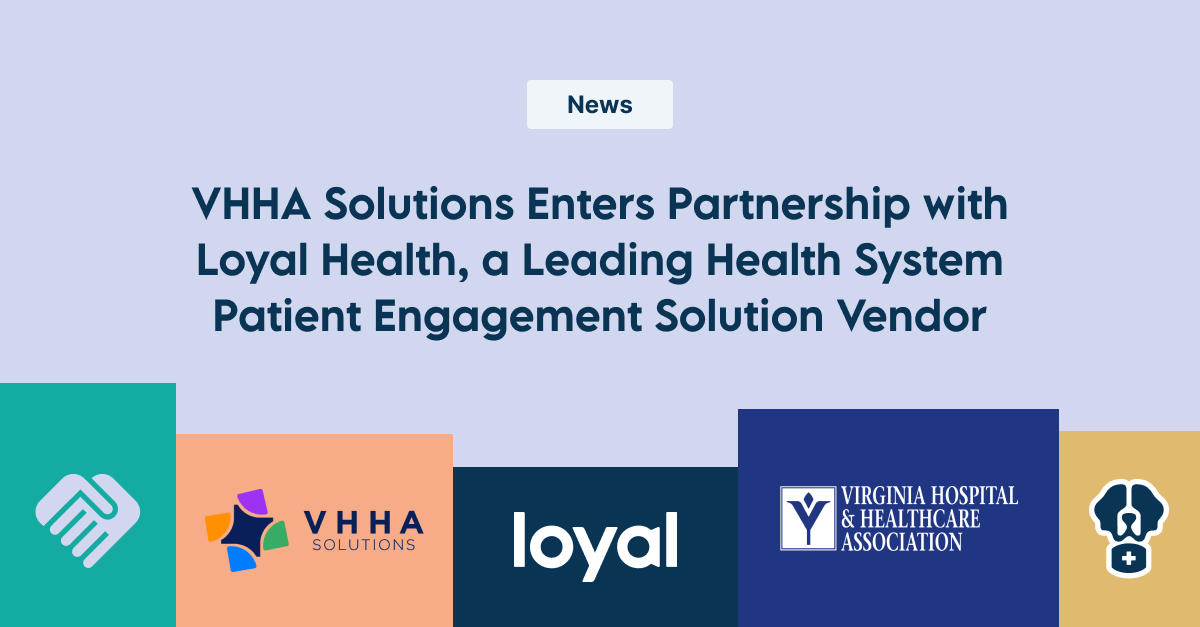Loyal was recently included as a Sample Vendor under category Digital Front Door in the Gartner® 2022 Hype Cycle for Digital Care Delivery Including Virtual Care 2022 report. The Gartner report provides 4 user recommendations for an organization adopting a Digital Front Door (DFD). Following, those recommendations are listed, along with explanations of our take on each one:
- Gain organizational endorsement for your DFD strategy and roadmap by identifying the cost, revenue, clinical and experience gains that will be realized through the enablement of comprehensive, personalized, digital patient journeys.
Organizations like Amazon, Apple, and Village MD have access to a lot of data; they can innovate quickly because they’re already familiar with efficiently putting data to work, an advantage for both their consumers and for their bottom line. So to stay competitive, traditional health systems must implement organized, well-governed technological solutions, starting with the right DFD deployment.
Getting support for investing in a DFD means showing your organization the value of data. When precisely implemented, a DFD can not only increase revenue, but give patients and consumers positive, seamless experiences, end-to-end.
According to recent research, roughly one third of providers, executives, and other stakeholders invested more money in 2022 on the full technology experience (TX). Health systems can derive a lot of data from a sound DFD strategy, including insight on care journey gaps and emphasis on noting and resolving pain points in consumers’ journeys – all of which is information that’s only readily available with a functional DFD in place, providing data on a consistent basis. By focusing on the end-to-end experience and using data efficiently, health systems can differentiate themselves from competitors, offering long-term relationships with providers as well as specialty services, and also providing transparency and seamlessness throughout, meeting consumers where they are.
- Identify strategic vendor partners by evaluating not only their capabilities, but also their ability to align to your development and implementation roadmaps and timelines.
Each health system has its own goals to reach, to better serve their patients and consumers as well as their physicians and staff; implementing a DFD should align with those goals and plans to get there, assisting in the process, not disrupting. Your DFD should listen first, then work with your health system’s stakeholders to ensure timelines and objectives are met, carefully strategizing and planning alongside you and your team. Ideally, the right DFD has the track record and client testimonials to prove itself.
For example, when the Loyal team worked with Michigan Medicine, it was imperative that we first listened to the goals set for their health system, then addressed how we could work with them to facilitate success. The MIchigan Medicine team is now planning to expand their chatbot to answer questions about locations and relevant providers, billing and payments, and long-term COVID support services. The health system will also be able to offer appointment location assistance and appointment details, address employee questions, and support deeper click-to-call functionality to connect chat users with broader, more accurate routing to call centers and offices.
Finally, the expanded relationship will include the development of conversational AI with unique, context-driven dialogs for consumers who visit the specialty-center hospital websites of the Frankel Cardiovascular Center, Rogel Cancer Center, and the C.S. Mott Children’s Hospital. This addition to Michigan Medicine’s existing AI technology will more efficiently recognize consumers’ intent, point them to answers, and provide the information they need.
Because we ensured our work with the Michigan Medicine team was aligned with their objectives on the front end, we successfully took them through the digital front door and beyond. Ultimately, they chose to expand their relationship with us because their consumers benefited from the support Loyal offered throughout the engagement, meeting and exceeding their enterprise goals.
Explains Rose Glenn, Chief Communications and Marketing Officer at Michigan Medical. “Building on our successful track record, we look forward to rolling out additional capabilities over the next three years with Loyal to improve our employee and patient experiences – further advancing our world-class healthcare experience for the digital age.”
- Reduce time to deployment and value realization by adopting a composable architectural approach that enables composition of existing applications (such as EHR) and custom-built capabilities.
As Gartner points out, “Integration remains a significant barrier to DFD deployment. The DFD is not delivered through a single solution; data must flow freely across solutions and touchpoints to optimize the patient experience.”
Ensuring consumers and patients experience seamless transitions through every facet of the healthcare journey means finding a DFD solution that’s experienced in working with various technologies to integrate them successfully. Communication between departments and technologies are intrinsically linked – disparate systems can’t help clinicians, administration, or ancillary staff see all of the consumer’s steps to now, which inform diagnoses, physician recommendations, appointment urgency, and so much more.
Find a DFD provider that can help with the transition process, one that’s experienced and partnered with EHR solutions and other patient technologies, so they can assist with any necessary adjustment during the DFD adoption process.
- Maximize consumer, patient and employee adoption by taking a total experience approach to address digital and nondigital needs across their respective journeys especially the components that intersect. Invest in multi-experience technologies to improve user experiences across channels, devices, touchpoints and interaction modalities.
Fierce Healthcare reports, “When designing inclusive care services, it’s important to start with human-centered design. This approach seeks to understand personal experiences by applying empathy, demonstrating cultural humility, and investigating opportunities from different perspectives.”
Including everyone in the DFD strategy means starting with a human-centered, all-encompassing approach – focused on the people the health system will serve, and those who will work closely with the technology. Using the data is a means to gain insight into the human experience of your health system, to make it seamless and simple for consumers, patients, and staff to navigate, connecting conversations and interactions from start to finish.
At the end of the day, people simply want to be treated as humanly as possible, digitally or otherwise. As Brian Gresh, President at Loyal, explains, “It’s really about alignment – people don’t want to be treated any differently in a digital setting than they want to be treated as a patient in real life.”
The Loyal platform provides health systems with a comprehensive suite of connected solutions – including data management, digital front door, CRM, support for access and referrals, and reputation management. Loyal helps you connect the dots for your consumers, staff, and clinicians, end-to-end, and provide continuity throughout the patient experience.




